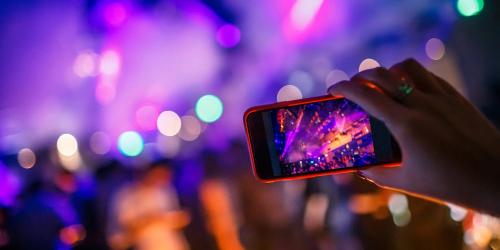Home birth: a real desire
Many New York women live childbirth in hospitals as an aggression against their bodies and babies. They want a more natural experience, as a family. Good feelings that do not prevent risks. Report to fervent supporters of childbirth "at home".
It has been eight months since Leigh , a 33-year-old sculptor in New York, gave birth in her bed, assisted by a midwife, in the company of her husband and her 2 1/2 year old son. " It was so intense that it seems to me yesterday ," she says. I was still nursing my son, and it was he who triggered the contractions while suckling my breast. With him and my husband, we began to breathe, to make sounds that relieve and relax, to walk all three the apartment, arm in arm. We watched a movie, ate sweets, went for a stroll in Central Park. Standing, with the force of gravity, it's easier: no question of being stretched out and hindered, as in the hospital. My older brother's smile was like a light to which I clung when I was in pain. He had been well explained what was happening, and his presence supported me until the arrival of his brother. "
Home delivery: too much "butchery" at the hospital
Stride his terrace to trigger the first contractions, gorge on sweets and breastfeed the elder while giving birth, is it reasonable? Are we not faced with the delirium of a handful of nostalgic urban bobos from the Garden of Eden? In the United States, today, they are only 1% to give birth "at home" , but this epiphenomenon becomes trend.
It must be said that attending the birth of the last of the brothers in the living room, Leigh knows: she was 9 years old when her own mother gave birth to her sister, under his eyes. " What an extraordinary way to meet his sister! It was intense, never scary. My mother had been traumatized by my own birth in the hospital: the forceps, the episiotomy, to finally undergo a caesarean section ... A real butcher, according to her, and the nurses separated her from me, to bring her the bad baby, the next day! She was panicked, but as she watched me she could find me, but she vowed never to trust strangers again. "
Home delivery: the sono plays "is this love" by Bob Marley
Until the 1950s, the majority of women gave birth at home. It was during the sixties, with the medicalization of pregnancy and the arrival of the epidural, that the delivery took the way to the hospital. But in recent years, women have chosen to "reclaim" their birth , to live intimate , at home , surrounded by their loved ones . The numbers are up: they are 2.4% in the state of Vermont, 2.3% in Montana, 2% in Alaska and New York, to follow this new fashion that provokes controversy and debate, the different US states do not not condemning it, provided that it takes place in the presence of a qualified midwife.
" You have to know that 10% of home births end up in the hospital, when a complication occurs or the work is too long ," continues Leigh. People think, wrongly, that the hospital option is scratched when choosing to stay at home, but it's wrong! I had full confidence in my midwife, who came to see me every month throughout the pregnancy. Nothing to do with appointments at the hospital, where you have to queue with a number, where you are weighed and measured belly in five minutes, and ciao! Leigh's husband was born at home, and this is one of the first things he told her when they met. Funny prologue! Our two ecologists were decidedly made for each other. "This common point completely upset me, admits Leigh. We were in a party, and the sound was playing "Is this love" by Bob Marley. Seven months ago, it was on this same song that my son was born. "
Cara has been a midwife for thirty years in New York. After working for fifteen years in a hospital, she wanted to turn to women who choose to give birth at home. For her, it's the best way to keep control of her body and her life, without letting the medical institution and its procession of strangers take hold of and interfere, according to criteria dictated by performance. " An obstetrician once told me that giving birth at home was like getting in a car without buckling up ," says Cara. The phrase is well turned, but it is wrong. When I go to a patient, I bring the same drugs as the obstetricians, but I only use them as a last resort, with the consent of the woman who gave birth. These are products that redouble the intensity of contractions. I also have an oxygen mask to revive the baby if he is born without breathing, as well as years of breathing massage. But I do not let this happen: I escort about 10% of my patients to the hospital, as soon as a complication occurs. In 90% of cases, everything goes wonderfully well: I massage the mother to relieve her, she walks a lot and knows how to swing to bring down the child. I use acupuncture points, a bath of hot water, I mass them when the baby comes out, to avoid having to practice an episiotomy and stitches. It is a moment that lives in the trust established over the months. My patients are far from rich - everything is covered by most US insurance - but they are still educated and strong women. Women who do not want us to decide for them. "
Home delivery: "When my daughter was born, I danced!"
" For me, it was excluded to take medicine , says Sita , 32-year-old dancer who gave birth, two years ago, a little girl in his living room. I did not want my child to be born under the influence of the drugs that are administered in the hospital to speed up the contractions, let alone the epidural. At home, the midwife waits for the baby to go out to administer the famous drug that causes the expulsion of the placenta. During childbirth, it is only massages, walks in the street if necessary, acupuncture and swinging of the hips, so that the force of gravity intervenes and that the baby goes down. It's out of the question to be lying down, hindered by cables. When my daughter was born, I danced: I felt so strong and proud! Since then I have gained a lot of confidence, and I do not let myself be harmed anymore, at work or elsewhere: I know what I can do now. According to Cara, women are still opting for the hospital for lack of information. Who knows that home birth does not cost more than the hospital, when the service is personalized and the caregivers are never unknown?
" Women are reassured by technology, yet they do not need it in 90% of cases. And if American midwives are to be believed, the death rate in a home birth is zero, says Cara. These are patients with hypertension or a history of cardiovascular disease, or a baby weighing over 5 kg and whose head is not facing down. Many are afraid of pain and prefer to opt for the epidural ... but is not it expensive to pay? There are three times more cesareans in the hospital (according to the unique comparative study, undertaken by Dr. Lewis Mehl in 1986), twenty times more forceps for lack of time, twice as much administration drugs that induce contractions and that the baby also absorbs, nine times more episiotomies ... "
Home delivery: a risk for mother and child
Pending a more recent comparative study, the American Congress of Obstetricians and Gynecologists (ACOG) has spoken out against home birth. According to Iffath Abbasi Hoskins, obstetrician and member of the Acog: " There are 3% of cases for which the decision to intervene must be taken in a few minutes, and if the hospital is a little bit far, is fatal. When the baby's heart slows down and he suffers, we must intervene within minutes. Same if the mother bleeds after a bad expulsion of the placenta: she can empty her blood in twenty minutes. "


